by Kyron
Everyone dealing with a vehicle most probably has known about a green colored substance called slime. It is mostly used for punctures and its green color signifies it as an environmentally friendly substance. This slime is renowned as a tire sealant. All in all, we can say it is a slime tire sealant.
It’s obvious that each product we use has a limited time span, with which we can use that specific product. So, the purpose of this general is to discuss, how long does slime tire sealant lasts?
This slime could be used for tubes, infiltrators, and for bicycles as well. So, there are many people who are in need of an answer to this question. Let’s discuss it further.
Are Cheap Furnace Filters as Good a...
Please enable JavaScript
Are Cheap Furnace Filters as Good as Expensive Ones?
Check Sealant Price
Whilst, reading this statement clearly, we could come to know it has two meanings. At first, we could take it as long as we could save it in packing. Secondly, it could have the meaning that for how much time a tire sealant could stay on a tire.
In the first place, we would have some knowledge about how long does slime tire sealant lasts when stored in packing.
In general, it would be answered as you can use it 4 years after opening the packing. It means you won’t need to count it by manufacturing date, you just can use it for 4 years from the date you have opened the packing.
Thus, you can use this slime tire sealant after opening for 4 years, still have a look at the manufacturing date and date code on the packing. It would help you to find a pack which was not manufactured a long ago. This date code could be found on the packing easily. Make sure that you are not buying the product that’s manufacturing date is so old.
Another thing you should keep in mind is to keep it at a cool place if you use a little amount of sealant and others kept somewhere for next use.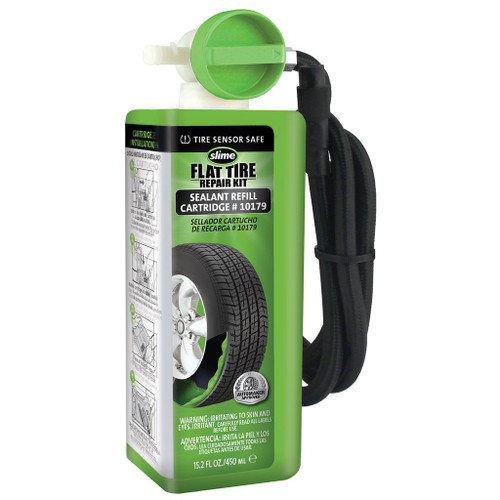 When you keep it at a dry and cool place, you could have the same quality of sealant while using it a second time and so on.
When you keep it at a dry and cool place, you could have the same quality of sealant while using it a second time and so on.
As, it is mentioned that you can use it for four years after manufacturing, so it is obvious that sealant would be perfect for 4 years and even after 4 years of manufacturing if you haven’t opened it.
This product is produced for temporary and emergency repairing of tires. You can use it on the tire to mend a punctured tire, but it is not a good solution to make it stay on the tire for a long period of time. Even Though you can leave the sealant on the tire of the bicycle, motorcycle, and car, it would not be a good idea to stay it on the tire even after 2 years. Try to fix the problem with a patch or plug repair as soon as you find a technician.
As is already discussed that it takes two years for a sealant to be dried out. It somehow depends on the condition of the tire as well, if the tire is lighter on which you have used sealant and the walls of tires are thin the sealant would dry out either without giving any useful impact. On the contrary, the sealant would be worthwhile till two years after use.
It somehow depends on the condition of the tire as well, if the tire is lighter on which you have used sealant and the walls of tires are thin the sealant would dry out either without giving any useful impact. On the contrary, the sealant would be worthwhile till two years after use.
There could be some signs that can guide you about the drabness of sealant on the tire. The tire would have less puncture protection in this case. You also would face the problem of less air in the tire. It’s an indication that you should go for a tire change or fix the problem by visiting a service center.
Weather conditions also have a great impact on the drying of sealant. In really hot weather, it could dry out much earlier.
After expiring or drying of sealant it’s time to remove the slime from the tire. For this purpose wear a pair of gloves and then use a wet towel for cleaning this dry substance from the tire. Using hot water is more effective to rinse the tire. A scouring pad or elbow grease can also be used for this purpose. Another method is also useful in this regard and you need a pressure washer with which you can spray the sealant area and wipe it by using shop reg.
A scouring pad or elbow grease can also be used for this purpose. Another method is also useful in this regard and you need a pressure washer with which you can spray the sealant area and wipe it by using shop reg.
Simply saying, this tire slime sealant is useful for almost all types of tires. Still, a list of specific tires is given below. We can use this green substance on;
The purpose of slime is to fill spaces between inner tubes and tubeless tires, preventing punctures on the tires and preventing air from escaping.
In addition to being non-toxic, non-aerosol, non-corrosive, non-flammable, and non-aerosol, tire sealants are also water-soluble. It is obviously an environmentally friendly formula which is designed to get the solution of tire problems in the state.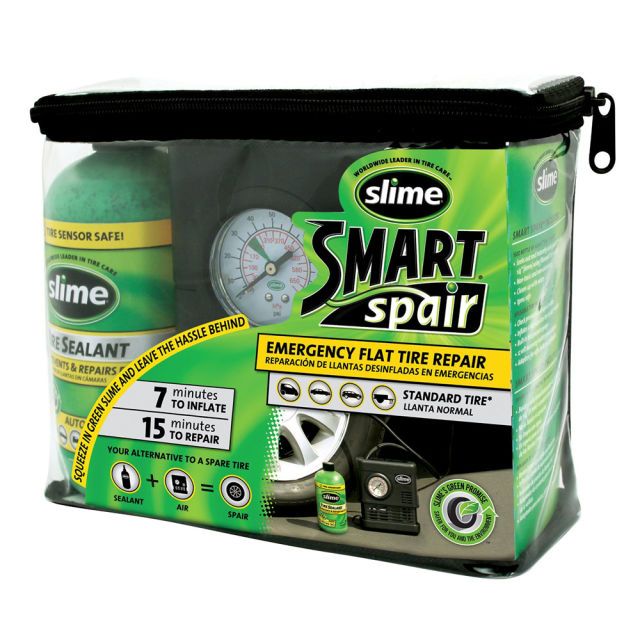 Using tire sealant slime is completely safe.
Using tire sealant slime is completely safe.
Finally, we can end this conversation by saying that the use of tire slime sealant is good and not harmful. In the first place, you must keep in mind that it could give you 2 years of relief with which you can use your tire by having the sealant on your tire. Mainly, the right option to proceed is to try not to wait for two years when you can fix the problem before that time. Secondly, you can use the sealant for 4 years after opening the packing of it.
Tire Sealant is a liquid you put in your tire to repair small punctures. It’s used by many car enthusiasts as a long term solution to fix flat tire issues.
But how long does tire sealant last? The only correct answer is until you can drive it to the nearest shop. Depending on tire sealant is dangerous, especially if you expect it to last for long periods of time. Using tire sealant when a simple plug or patch can be used is never advisable.
We will cover what tire sealant actually is, and why tire sealant shouldn't be depended on for more than a couple hours of use. We will also touch on the acceptable usage of tire sealant and finally, we will cover what tire sealant is industry standard.
As a tire tech in a shop, I’ve come across countless tires with sealant, and it’s always a mess. We were actually told to refuse service to customers who want a tire patched that’s had sealant applied. And rightly so, since the sealant can actually cause explosions if ignited by a spark.
The goal of tire sealant is to mimic the functionality of the tire’s inner lining. Sealant does this by coating the tire’s inner lining and acting as a pre-emptive measure to a future leak. When a puncture occurs, the sealant rushes into the hole and plugs it using fibers built into the sealant.
The liquid acts as a transportation mechanism for the fibers, since the air is being rushed out. Therefore, the liquid sealant rushes out with leaking air, leaving the fibers, and a plugged tire, behind.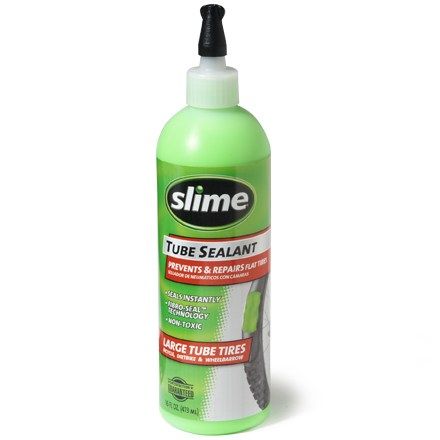
Tire sealant also offers a way to inflate a flat tire, by adding compressed air with sealant, the hole is plugged, and you have an inflated tire.
But if your tire is “rim-flat”, meaning, the tire is so flat, the rim is touching the ground, you’re going to need a whole tire sealing kit.
This is because the compressed cans of air that tire sealants are often sold do not contain enough air to properly inflate the tire.
Whether your use case is preventative or a solution to a problem, there’s something to remember. The plug that’s left behind originates from liquid. The viscosity of the liquid will make up a portion of the plug and the state of liquid varies.
By using tire sealant, you're implying that you’d like to depend on a liquid plug to maintain the full weight of the vehicle while in motion. It’s just not a safe option. Using liquid where rubber meets the road is dangerous not only for you, but for other drivers on the road.
Tire sealant has caused numerous deaths and injuries, and tire sealant companies have paid out millions of dollars in lawsuits.
It’s because the dependency one can expect from tire sealant is nowhere near what’s actually provided. It’s almost a 50/50 chance of whether the tire sealant will fix a flat tire. And if it does fix it, it’s another 50/50 chance as to whether the sealant will hold.
The use cases of tire sealant are small in number. Because of the unreliable nature of the liquid plug, driving for more than 15-20 minutes on sealant is not recommended. But in emergencies, such as being stuck on the side of the highway, and needing to pull over further, tire sealant is ok to use.
Other common use cases for tire sealant are for ATV’s. Riders will coat their tires with the sealant before a trek so they aren’t totally stranded if a flat occurs.
Sealant is quite effective for ATV’s since they run on low pressure, causing more flex and opportunity for the hole to be filled. Furthermore, tire sealant is also used in tractor tires and small engine vehicles that travel at very low speeds.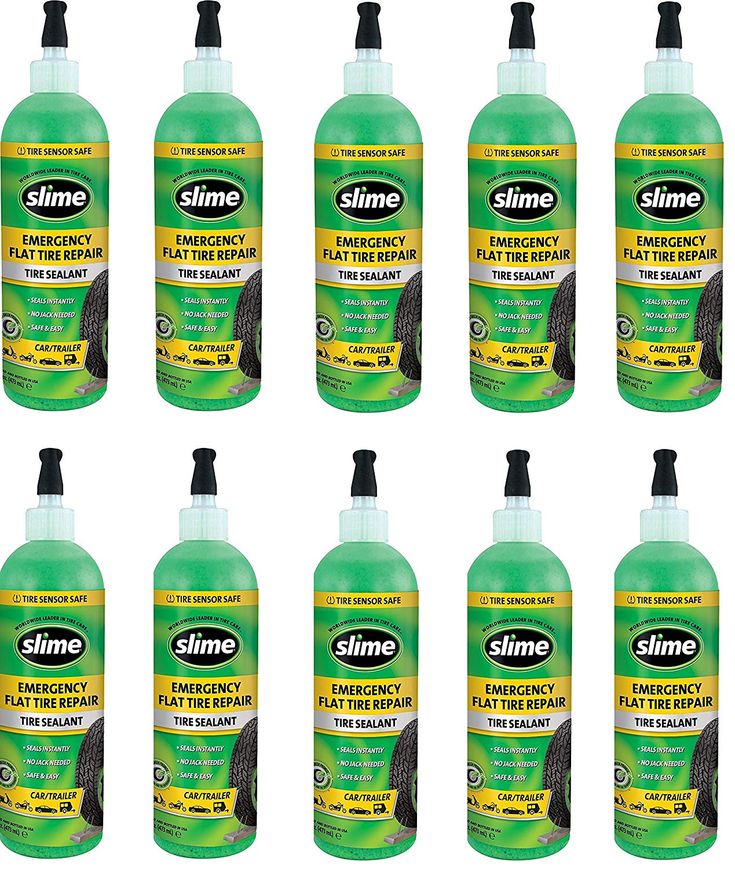
Sealant is used as a preventive measure to attempt a seal on a puncture before you notice it. In the case of tractors, you can drive on a sealant plugged tire, and depend on it to function correctly, because you’re moving very slowly.
So when the sealant plug fails, you just stop the tractor. But if you’re driving down the highway at 60mph, and the sealant plug fails, that’s a different story.
It’s considered acceptable to use tire sealant on vehicles that don’t come with any electronics inside the tires such as TPMS systems.
Using fix-a-flat on a tire with TPMS systems can damage the sensors by plugging up the holes the sensors depend on to get a valid reading. If you use sealant on a vehicle with TPMS, you can expect a TPMS light to come on.
If you are stranded on the highway, and have no triple A, but a tire sealant can, it’s ok to put tire sealant in your tire. But drive well below the speed limit, with your hazards on in an off lane until you can get to a safe spot, or more preferably, your mechanic.
Using tire sealant in any of these other situations is not recommended. Mainly for safety reasons, but also, because you will just have to keep applying the sealant, time and time again. You’ll save money, time, and headaches if you just take it to get properly patched.
While tire sealants are generally considered dangerous by all mechanics, they are still being sold in auto-parts shops and other retail stores. Many sealant companies have gone bankrupt from lawsuits leaving only a few behind.
So by process of elimination, they can be considered the best. The most common tire sealant is Slime. Slime is the United States’ best selling tire sealant. You can purchase Slime in a variety of packages ranging from single cans to gallon jugs.
Fix-A-Flat is another tire sealant that’s sold in US stores. The single can comes ready to use with an inflation tube that you hook up to the valve stem.
Once the tube is connected, just add the sealant by pressing down on the trigger. Fix-a-flat has changed its formula many times over the years, but the most important changes are they offer a non-flammable formula and a supposed TPMS safe version.
Fix-a-flat has changed its formula many times over the years, but the most important changes are they offer a non-flammable formula and a supposed TPMS safe version.
A new age tire sealant company, called TireJect, attempts to take a modern approach to tire sealant. While mainly used for ATV’s, TireJect also sells a vehicle tire sealant called TireJect Tire Sealant.
This sealant promises to be different by using a new, patented formula. TireJect has many different cases and variations of the amounts you can buy ranging from single pouches to one gallon jugs.
I’ve never heard of a driver adding tire sealant to a flat tire and feeling totally confident in the tire’s performance after adding it. They are usually left wondering if it’s working, or how long until it blows up. Speaking of which, if you add tire sealant to a tire, and eventually get around to plugging the tire, watch out!
When you ream the puncture, friction between the reamer and the cords can cause a spark, which ignites the liquid causing a large explosion.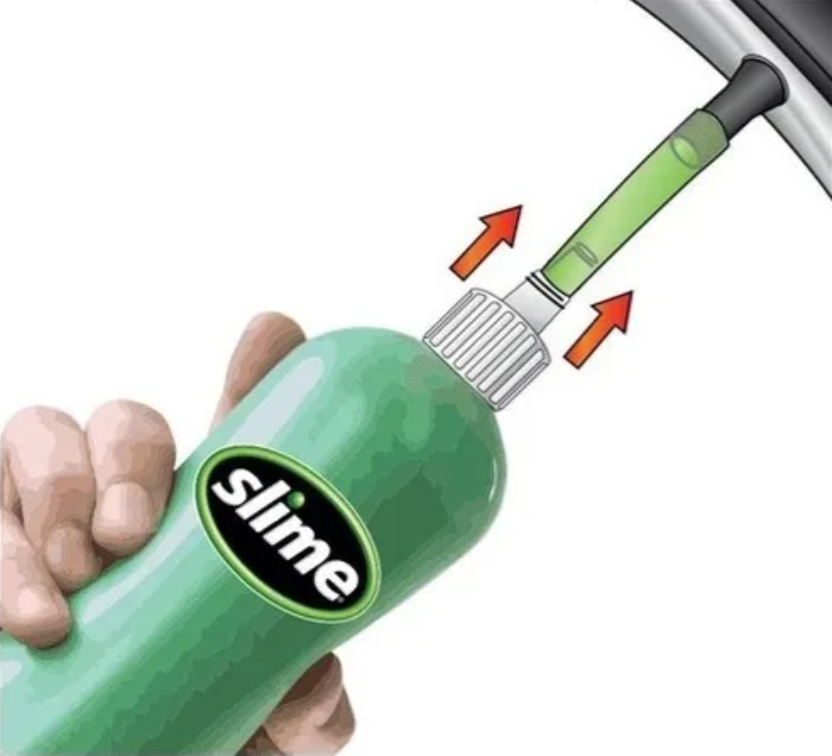
Tire sealant is an outdated solution to a very dated problem. When cars were new in America, tire sealant was the bees knees. But now, it’s a liability and a hassle.
If you use sealant on a flat tire, and go to get it repaired, you might be denied service. If you take it to an independent shop that doesn’t have to follow company guidelines, the mechanic will not be happy about having to wipe out ounces of tire sealant just to patch a tire. So yes, you can drive on a tire inflated with tire sealant, but only for a very short amount of time. Doing otherwise is considered dangerous and reckless.
An unpleasant situation, from which no car owner is immune, is a puncture of rubber. The problem arises spontaneously, and often there is no spare tire on hand to dismantle the punctured wheel and put on another one. In such cases, drivers use tire sealant, an effective chemical that can quickly seal a puncture on a tire.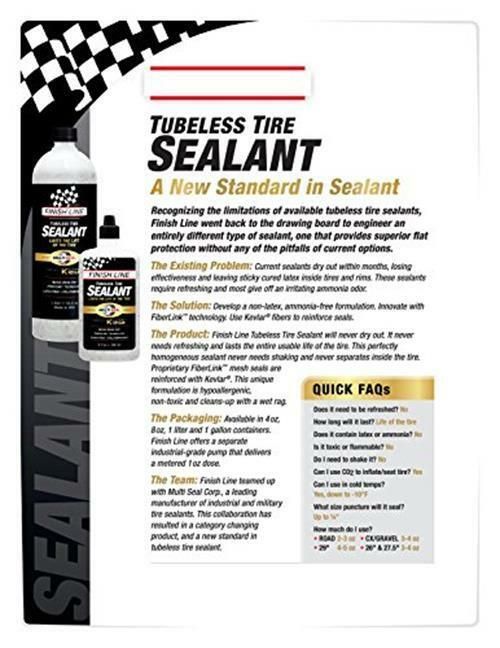
Contents
Automotive sealants have appeared on the market relatively recently and have already won the trust of vehicle owners. The substance for instant vulcanization of rubber is placed in a small sealed container. Depending on the components, tire sealants are either latex or synthetic/natural fiber blends. Sealants for express vulcanization of tube and tubeless tires offer important advantages:

Instant curing compounds are classified into aerosol and liquid, the characteristics of which differ slightly. By nature, aerosol sealant is liquid, but is contained in a high-pressure can. A hose is used to introduce it, but compressed air must be completely removed from the tires. The compositions can be used for repair work and the prevention of punctures. nine0003
Important: It is important to use emergency wheel sealant in case of punctures in the tread area. If you use tools for vulcanizing side cuts and cracks, the compositions are ineffective due to the effect of centrifugal force. It is not possible to seal the tire with sealant in case of disassembly.
To prevent the possibility of a tire puncture or cut on the track, car owners use express sealants. When the vehicle is in motion, centrifugal force helps distribute the tire sealant inside the tire. To prevent cuts in tubed tires, the sealing compound is distributed in the air cushion so that it protects the cord layer. Tire Damage Prevention Benefits:
Tire Damage Prevention Benefits:
Sealant prevents rubber delamination and improves tire temperature control when overheated. The use of puncture prevention agents simultaneously creates several levels of tire protection, prevents corrosion of the cords and increases the life of the rubber. In case of damage to the integrity of the tire, the viscous composition instantly forms a vulcanizing plug. nine0003
Repair sealants are used to quickly seal tires when trouble has already happened. Most formulations can only be applied on fully flat tires. The agent is injected through the nipple, and as the sealant enters, the tire is filled, and foam may form at the puncture site. Benefits of punctured tire emergency sealant:
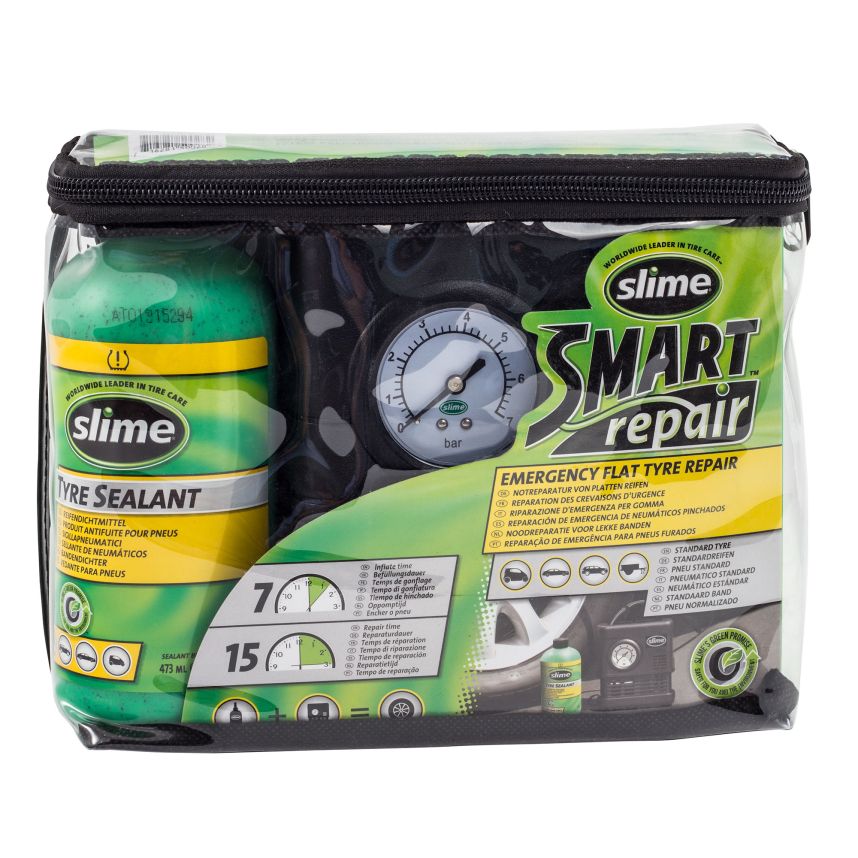
If a nail or a piece of glass is stuck in the wheel, before using the sealant, the object must be removed so that the substance reliably clogs the puncture and is evenly distributed inside the wheel. To fully restore the tire, you need to ride at low speed - this distance is indicated in the instructions.
The automotive market offers a wide range of instant wheel sealants. Products differ in technical characteristics, packaging and volume. It is worth paying attention to proven brands that have collected positive feedback from car owners and have successfully passed tests. General requirements that a tire sealant must meet:
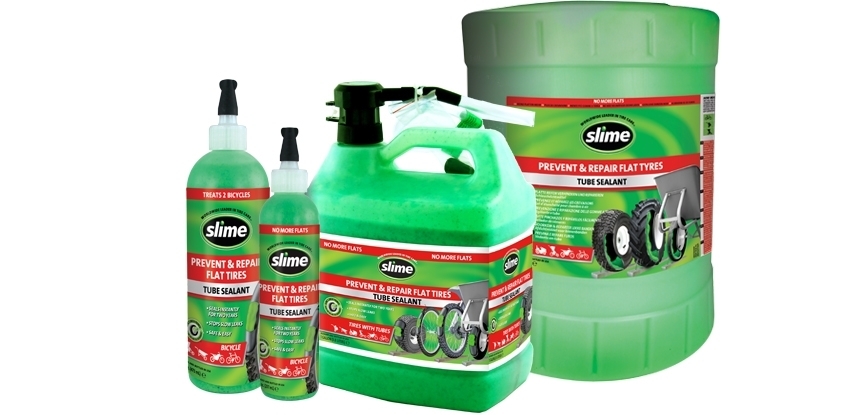 nine0010
nine0010 Attention: The effect of the use of sealants is short-lived, therefore, after repair, you need to contact the workshop for high-quality vulcanization and wheel balancing.
You can drive on sealed tires at a low speed within 50 km, the distance limit is 10 km. If the agent is used for prevention, the permissible speed and mileage are indicated by the manufacturer of the composition.
The main difference between tires is the presence and, accordingly, the absence of an inner tube. Automotive sealant manufacturers do not classify tubular tire products as a separate category. Therefore, you can use any composition of a universal type. nine0003
The Polish company K2 offered Tire Doctor sealant to the attention of car owners.
Universal tool, used to eliminate damage to any tires. It has a high combustibility, so before pumping up the filled tire to the desired pressure, gas should be bled from it. It is recommended to have a powerful car pump on hand. On the 10th kilometer of the track, the train completely copes with the puncture, in the place of which an airtight plug is formed. The pressure is kept at 1.85 atmospheres. nine0003
The pressure is kept at 1.85 atmospheres. nine0003
Hi-Gear Tire Doctor, an American-made emergency wheel sealant, according to the company, is suitable for tube and tubeless tires. A wheel filled with compound hardly lifts off the ground, which indicates low tire pressure. The properties of the active components of the American sealant are exactly enough to reach the nearest tire service.
Modern vehicles off the assembly line are equipped with tubeless tyres. Fixation with discs occurs due to a layer of special rubber. Tires with a tire and a tube are installed on earlier generation car models. In terms of road safety, tubeless tires show a clear superiority - you can drive a greater distance on a punctured wheel. nine0003
Most of the sealants available on the market are of the universal type. But there are special-purpose tools that do a good job of sealing tubeless tires. Sealant Pingo Reifenpannen-Spray - according to the manufacturer's instructions, you can drive about ten km on a vulcanized tire, depending on the nature of the damage, at a speed not exceeding 50 km / h. When filled with sealant, the wheel quickly takes on an “inflated” shape. In the process of movement, the pressure decreases, but not significantly. nine0003
When filled with sealant, the wheel quickly takes on an “inflated” shape. In the process of movement, the pressure decreases, but not significantly. nine0003
Products designed specifically for tubeless wheels include the German sealant Motip Dupli AG Car Tire Repair. The sealing of the tire completely occurs after a few kilometers.
Another effective product, Runway RW6125 Sealant, is sold in a capacious 650 ml can. The purpose of Runway Tire Sealant is to repair tubeless tires while inflating the wheel. Eliminates punctures up to 6 mm, creates the required pressure in the tire in a few minutes. nine0003
Advantages of tubeless tire sealants include fast filling of the wheel, effective sealing of punctures. The products do not cause corrosion of the cord threads, are easily pumped into tires through a fitting attached to the wheel nipple. Sealants are quickly distributed over the surface and hold pressure well up to 2 atmospheres.
Good quality Motip Black Line emergency vulcanizing sealant. In a few minutes, tubeless tires can be repaired with sealant. To use the aerosol, you do not need to disassemble the wheels. The rubber-based substance effectively removes up to ten punctures of various diameters simultaneously. nine0003
Note: In order to properly use emergency sealants, the cause of the puncture must be eliminated before filling the tires with a liquid compound or aerosol - a glass shard, a nail, a sharp metal object.
Some manufacturers produce universal type products. The compositions are suitable for hermetic filling of punctures in chambered and tubeless wheels. The most popular products of this line:
 nine0010
nine0010 Special attention should be paid to tubeless rim compounds - rubber-based sealants designed to seal air leaks between the rim and the bead. Motorists use ready-made compounds with natural rubber and other components of Rossvik-Light, Bestpatch, Unicord, Tech. Sealing agents are applied with a brush between the rim and tire of tubeless tires, which prevents air from bleeding from the wheels.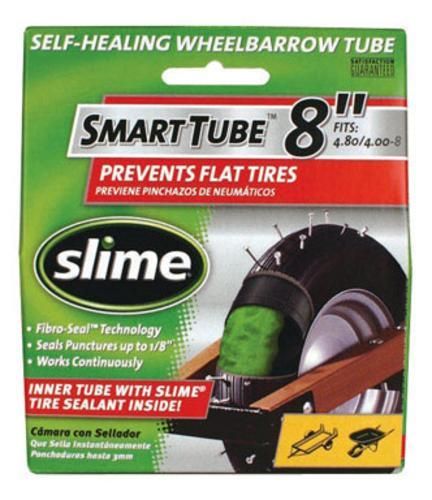 A special lubricant in the form of a concentrated paste can be applied to the tire beads to facilitate mounting / dismounting of wheels. nine0003
A special lubricant in the form of a concentrated paste can be applied to the tire beads to facilitate mounting / dismounting of wheels. nine0003
The main advantage of the method is that there is no need to disassemble the wheels. When using compounds, follow the recommendations of the sealant manufacturer:
After sealing is complete, check the tire pressure, bleed excess air or inflate the tire if necessary. After a few kilometers, the indicators are re-measured. When using liquid products, the work order is preserved, but after filling, turn the wheel several times to evenly distribute the composition, inflate the tires.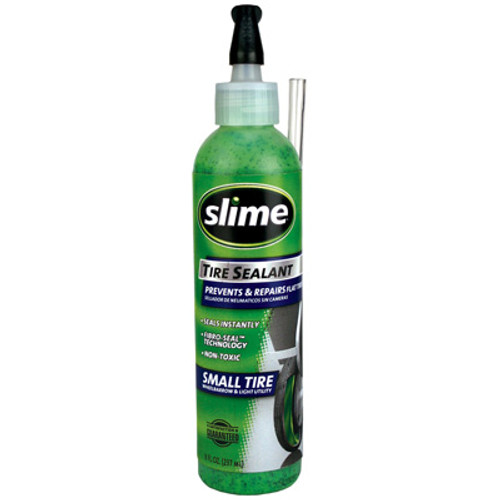
The use of preventive sealants helps prevent punctures, and emergency tools help to cope with damage to the wheels. Sealants reliably seal small holes, cracks, punctures, increasing the service life of automotive rubber. It is necessary to ensure that when using aerosol formulations, the tires are not pumped over. Substances can be used exclusively for patching damage on treads and on undeformed wheels. nine0003
And unfortunately, not always in the car there is a spare tire. Sometimes, due to the lack of a fifth wheel, they free up space in the trunk, sometimes they lend it to friends or acquaintances at the wrong time, and in some cases, even two wheels can be punctured at the same time. In this case, tire sealant can come to the rescue. nine0003
In this case, tire sealant can come to the rescue. nine0003
It cannot be said that this is a panacea for the problem that has arisen, but sometimes such a remedy helps the driver and allows him to reach the nearest service station.
Tire sealant is a relatively new product in the automotive chemical market. Such a tool has both fans and opponents.
There are different types of sealants, and when choosing a brand, it is important to pay attention to the recommended temperature range. Many imported formulations are ineffective in the domestic climate. nine0003
The sealant cools the wheel slightly when blocking the puncture. In winter, this property is superfluous, but in summer it is simply irreplaceable.
The following types of products are distinguished:
 Many compounds work only with a completely flat tire. To do this, a tool is introduced through the nipple and just before the eyes of the driver, the wheel begins to turn round, and foam may appear from the gap formed. The procedure will not take much time. nine0010
Many compounds work only with a completely flat tire. To do this, a tool is introduced through the nipple and just before the eyes of the driver, the wheel begins to turn round, and foam may appear from the gap formed. The procedure will not take much time. nine0010
Sealants are also distinguished by composition:

Latex-based products coat the entire inner surface of the tire, including punctures, and cure to form a dense protective film. In the case of using fibrous compounds (they can be based on polyethylene, asbestos or paper), the sealant fills mainly holes and pores in rubber. nine0003
Modern manufacturers offer consumers a wide range of tools to help eliminate a puncture on the road. How to choose a high-quality sealant in such a variety? We'll figure out.
When choosing products, the following points should be considered:
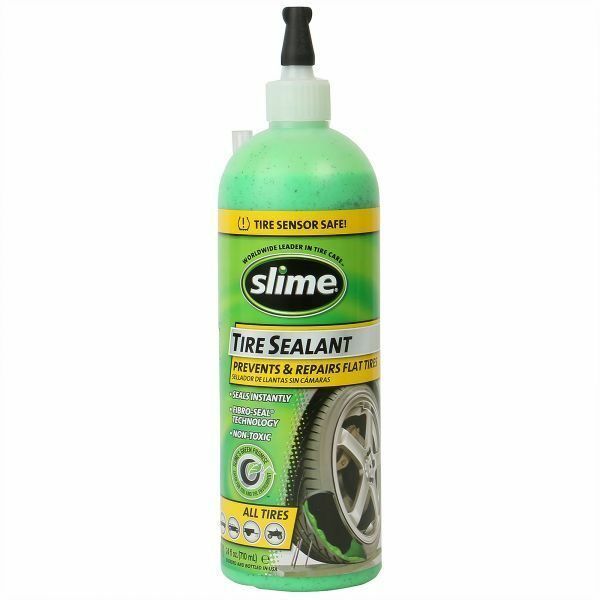
In order to determine which product is the best at dealing with tire punctures, a test was conducted during which new tires were used. For the purity of the experiment, each puncture had a diameter of 3 mm.
Here are the test results:
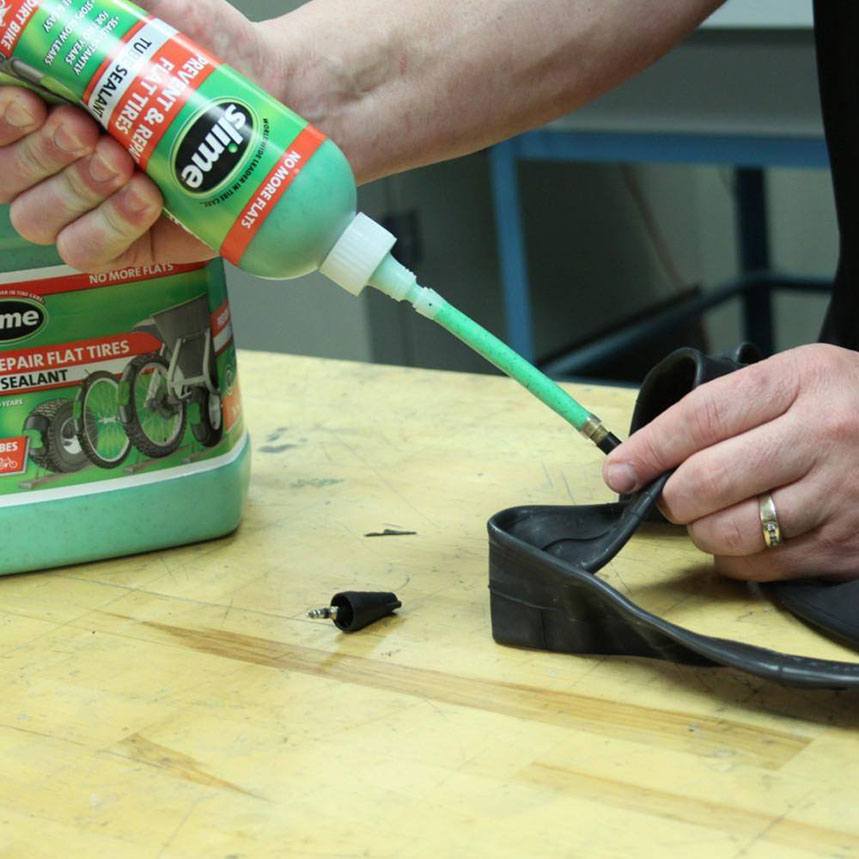 Produced in the form of an aerosol. nine0248 During the testing of the composition, the time of its introduction took about 1 minute. After the rim has risen, you can go. After 2 km, the pressure in the tire was checked - 1.4 atm. The path was continued after raising the pressure to 2 atm. After 10 km, the pressure was checked again - and again 2 atm. The result is excellent!
Produced in the form of an aerosol. nine0248 During the testing of the composition, the time of its introduction took about 1 minute. After the rim has risen, you can go. After 2 km, the pressure in the tire was checked - 1.4 atm. The path was continued after raising the pressure to 2 atm. After 10 km, the pressure was checked again - and again 2 atm. The result is excellent!  After 2 km, measurements showed only 0.6 atm. We pumped up the tires to 2 atm and continued on our way. The car drove only 3 km, and the rim was again on the ground. This sealant is not suitable.
After 2 km, measurements showed only 0.6 atm. We pumped up the tires to 2 atm and continued on our way. The car drove only 3 km, and the rim was again on the ground. This sealant is not suitable. 